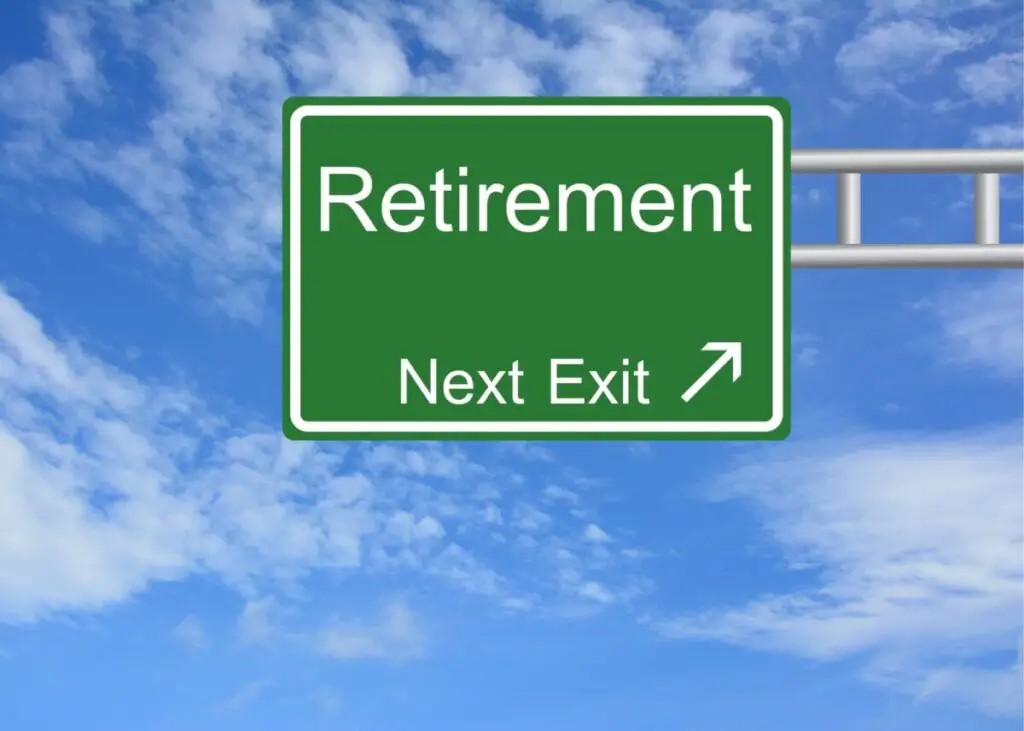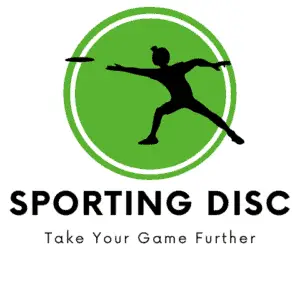I’ve been fortunate to hold on to all of my discs since I started playing disc golf. But, when is it time to finally retire that old, beat-up disc in your bag?
In this article, we’ll cover the 7 important signs to look for when you’re deciding whether to retire and/or replace a disc golf disc.
Table of Contents
When You Should Retire or Replace a Disc Golf Disc
You should retire or replace a disc golf disc that no longer performs the way you expect when throwing it. There are several additional signs to know when identifying if a disc golf disc should be retired. These signs can include:
- The disc is warping
- Chunks are missing from the rim of the disc
- An unpredictable flight pattern
- The disc is too understable
- The plastic is splitting.
- You’ve thrown an ace
- The disc has other sentimental value
In this article, we’ll cover the 7 most common signs that it’s time to retire a disc golf disc.

Do Disc Golf Discs Wear Out?
In certain situations, a disc golf disc can wear out over time. The reasons for this can vary. A disc will eventually become “beat in” or “broken in” over the normal course of its lifetime.
Breaking in a disc golf disc means that slowly, the disc will change its flight pattern the more it’s used and the more pliable the plastic gets.
For more information on breaking in a disc, see this post here.
The grade of plastic can make a difference in how long a disc will last before it finally wears out. There are lower-grade plastics that are used for some discs.
Discs made with lower-grade plastic will wear out much quicker than premium-grade plastic.
A disc that has taken impacts with rocks, buildings, trees, and other hard objects can reduce the overall lifespan of the disc.
On the other hand, a quality disc with normal use can last many, many years.
How Long Does a Disc Golf Disc Last?
The frequency of use, quality of the plastic, and durability of the disc will mostly dictate how long a disc golf disc will last.
While it’s true that a disc can physically last for decades, the useful life of a disc can be much shorter.
On average, the useful life of a disc will be from 2-4 years of moderate to high use. The time frame of 2-4 years is mainly due to the disc becoming more and more understable over time, as it’s broken in.
Of course, there are always outliers, and I’ve heard of discs lasting much longer than 4 years while still being useful.
7 Important Signs It’s Time to Retire a Disc Golf Disc
Below are the 7 most common signs or reasons that a person might retire or replace a disc golf disc.
Not all of these reasons are because of physical damage. Some players retire a disc for other reasons too.
1. The Disc is Warping
When discs are kept in direct sunlight, in a hot bag, or smashed under a heavy object the plastic can warp and bend.
Warping or bending of the disc can alter the flight of the disc in unexpected ways. There are ways to get a warped disc back to its original shape.
But, other times a disc might be so warped or misshapen that there is no fixing it. In this case, there might be no other choice than to retire the disc from regular use.
Keeping the disc out of the direct sunlight, avoiding stacking heavy objects on top of the disc, and keeping impacts to a minimum will help you to avoid a warped disc.
2. Chunks Are Missing From the Rim
As a beginner, you’re going to be hitting objects other than the chains of the basket more often than not.
We’ve all had an errant throw end with a disc slamming into a tree or taking a nosedive onto the hard ground.
Unfortunately, repeated impacts or hitting a very hard object just right can take a chunk out of the rim of the disc.
If this happens, there is no way that the disc can be repaired. It will also affect the flight of the disc, and could even make the disc completely unusable.
If you notice chunks missing from your disc, it’s probably time to put that disc back in the bag for good.
3. Unpredictable Flight Pattern
Experienced disc golf players know exactly how each of their discs will perform when thrown. The flight pattern of a specific disc will dictate whether it’s used in certain situations.
But, if your disc is not flying in a consistent manner or a predictable flight pattern, you’re going to lose confidence in that disc to do what you want in those situations where a specific shot is required.
This can happen for many reasons, warping, extensive breaking in, worn down plastic, cracking, or splitting of the disc can all affect the flight pattern of the disc.
The only option here is to stop using the disc because you’ve lost confidence or understand how else the disc can be used with a different flight pattern.
4. The Disc is Too Understable For Your Liking
The normal life of a disc golf disc will see it change in-flight stability from an overstable to an understable.
This means that the disc will eventually fade more and more to the right for an RHBH (right-hand backhand) thrower.
An understable disc has its uses for any player, but you might not want the disc to turn too sharply to the right or even be what is called “flippy”.
A flippy disc is a very understable disc that will turn up on edge and hit the ground as a roller. If you have no use for another roller or understable disc, it might be time to retire it.
5. The Plastic is Splitting
UV rays, poor storage, or hitting objects during play can eventually cause the plastic of the disc to split and crack.
These small splits can alter the flight of the disc to the point where it’s not good to use anymore.
A lower-grade plastic disc will be more susceptible to cracks, splits and damage.
6. You’ve Thrown an Ace (Or Multiple Aces)
Throwing an ace on a hole is a great achievement and a great day when it happens. Some players will sign the disc with the date, location, and hole to commemorate the occasion.
If you throw an ace and sign the disc, chances are you’re not going to want to continue to play with that disc, and instead put it somewhere it will be kept safe and clean.
Players who are good (or lucky), will wait until they have thrown two aces with the same disc before they retire it.
The downside of doing this is that you’re going to be putting away a disc that you might enjoy using.
7. The Disc Has Sentimental Value
There are times when a disc might have a lot of sentimental value to you. It could be the first disc you ever bought, a gift from someone important, or any other number of reasons.
It’s a fact of life that discs are lost, thrown in the water, or broken during play. You might have that one disc that you can’t imagine losing or breaking. So, in this case, sometimes it’s best to just retire that disc.
Final Thoughts | When to Retire a Disc Golf Disc
Some disc golf players would never think of “retiring” a disc for any other reason than if they lose it or decide they want to throw something else.
These players will continue to use the same beat-up disc no matter what happens to it. They might just use the disc for a different shot than what it was originally intended for.
If you’re one of these people, that’s perfectly OK too. There is no rule that says any disc needs to be replaced or retired at any time.
It’s a totally personal preference and it comes down to what you’re confident in using on the course.
But, it’s best to keep an eye out for some of these tell-tale signs of a disc that is getting old, worn down, or past its useful life.
Even if you intend to continue to use the disc, you’re going to know beforehand that the disc might not perform the way you’re used to and you can adjust accordingly.
